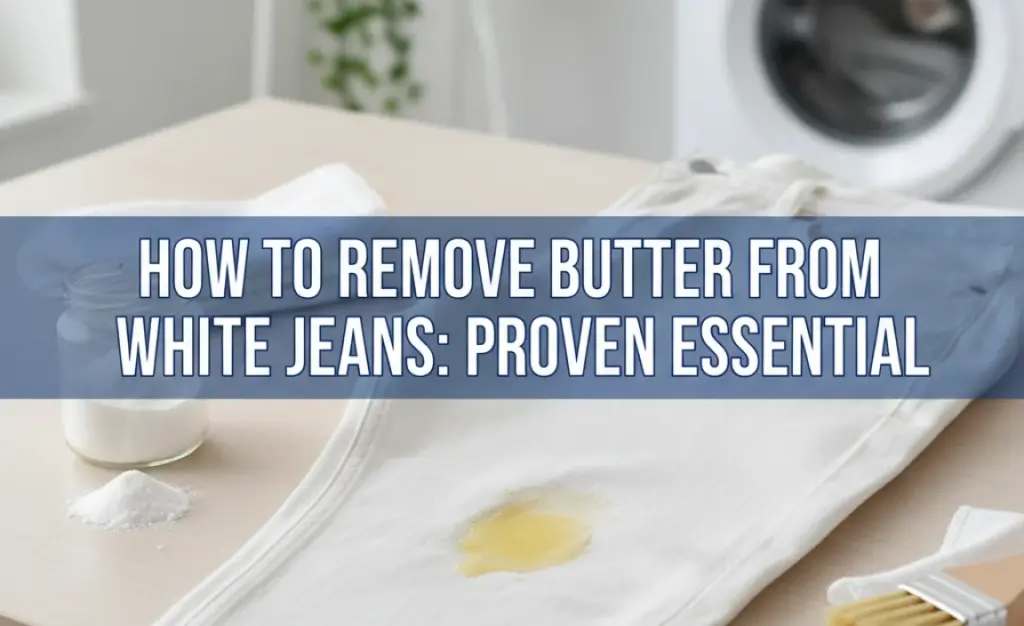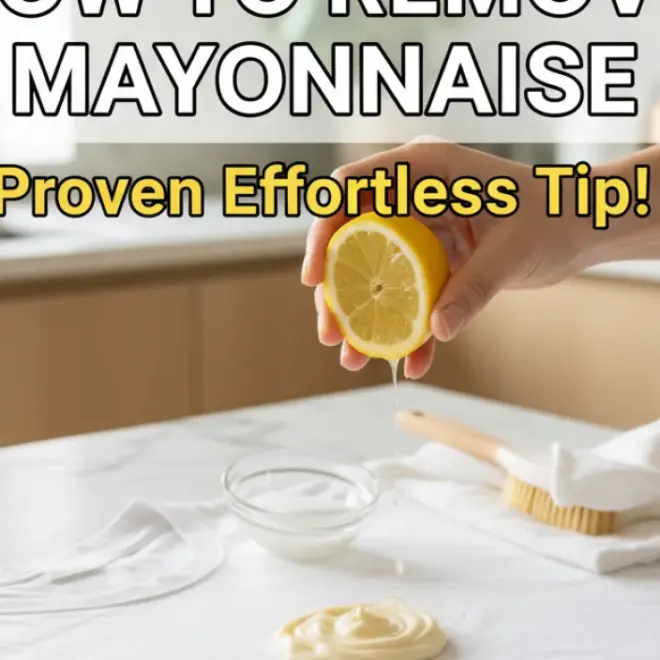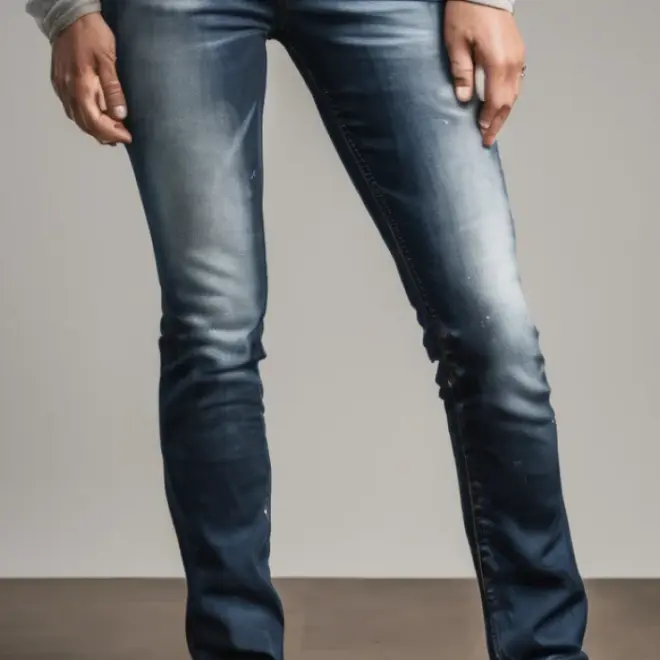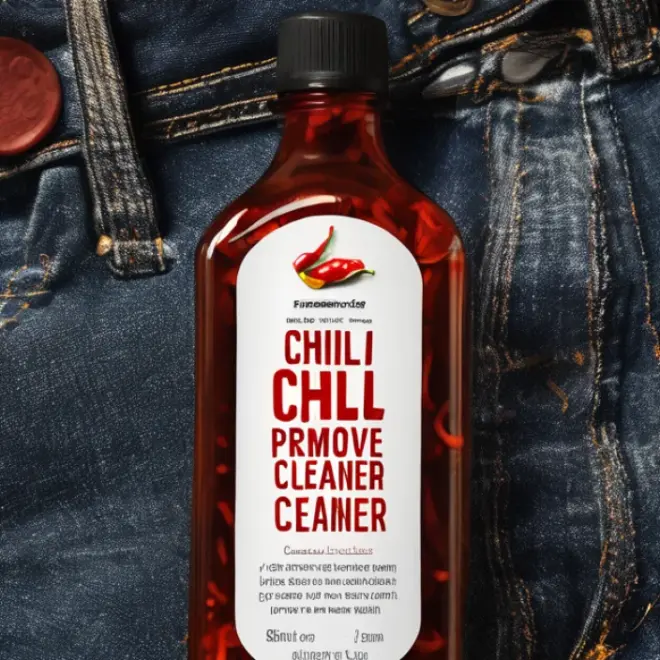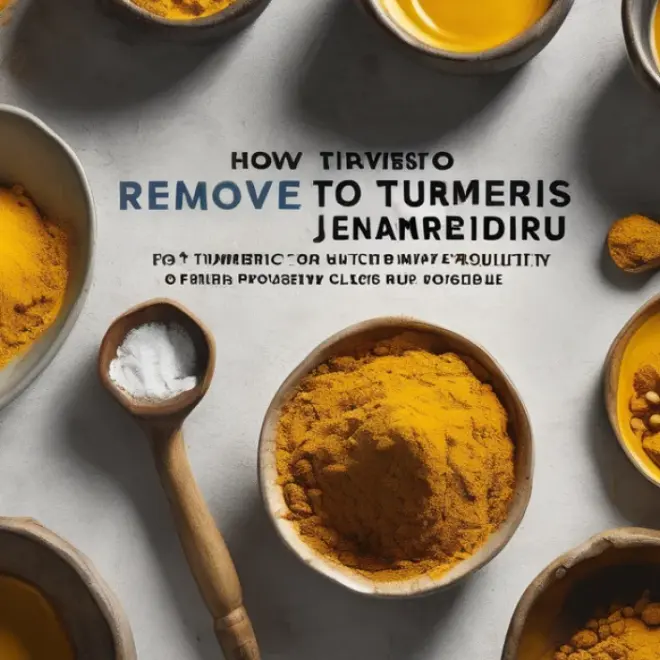Quick Summary: To effectively remove butter from white jeans, act fast! Gently scrape off excess butter, then use a stain remover or a mix of dish soap and water. Blot, rinse, and wash as usual to restore your crisp white denim.
White jeans are a wardrobe staple, offering a fresh and chic look for almost any occasion. But they can also be a magnet for spills and stains, none more unwelcome than a greasy splotch of butter. Dealing with a butter stain on your favorite white denim can feel like a fashion emergency, turning your pristine pair into a source of frustration. The good news is that with a few simple steps and the right approach, you can successfully banish butter stains from your white jeans, restoring them to their former glory. Let’s walk through how to tackle this common clothing mishap with confidence.
Understanding Butter Stains
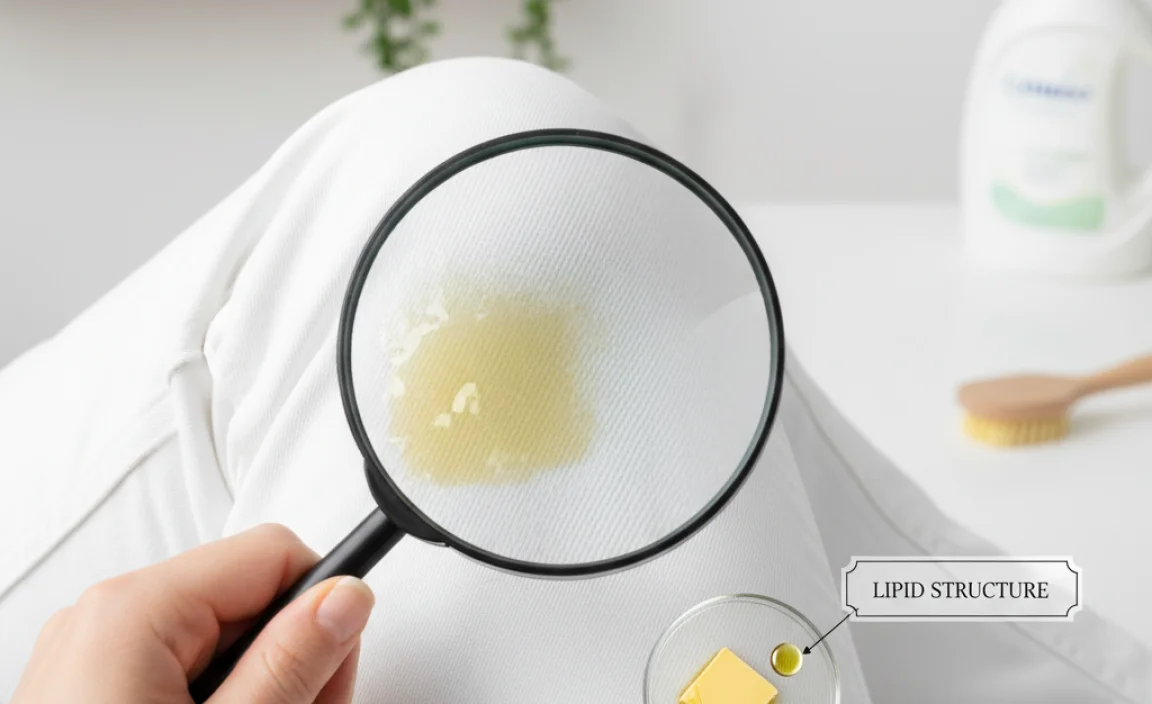
Butter, being an oil-based substance, requires a specific approach to removal. Unlike water-soluble stains, grease and oil tend to bind to fabric fibers, making them a bit stubborn. White fabrics are particularly notorious for showing every speck of dirt and every errant spill, which is why knowing how to tackle stains on them is essential. The key to lifting a butter stain lies in breaking down the grease before it has a chance to set permanently into the denim. Fortunately, many effective solutions are likely already in your home.
Essential Tools and Supplies
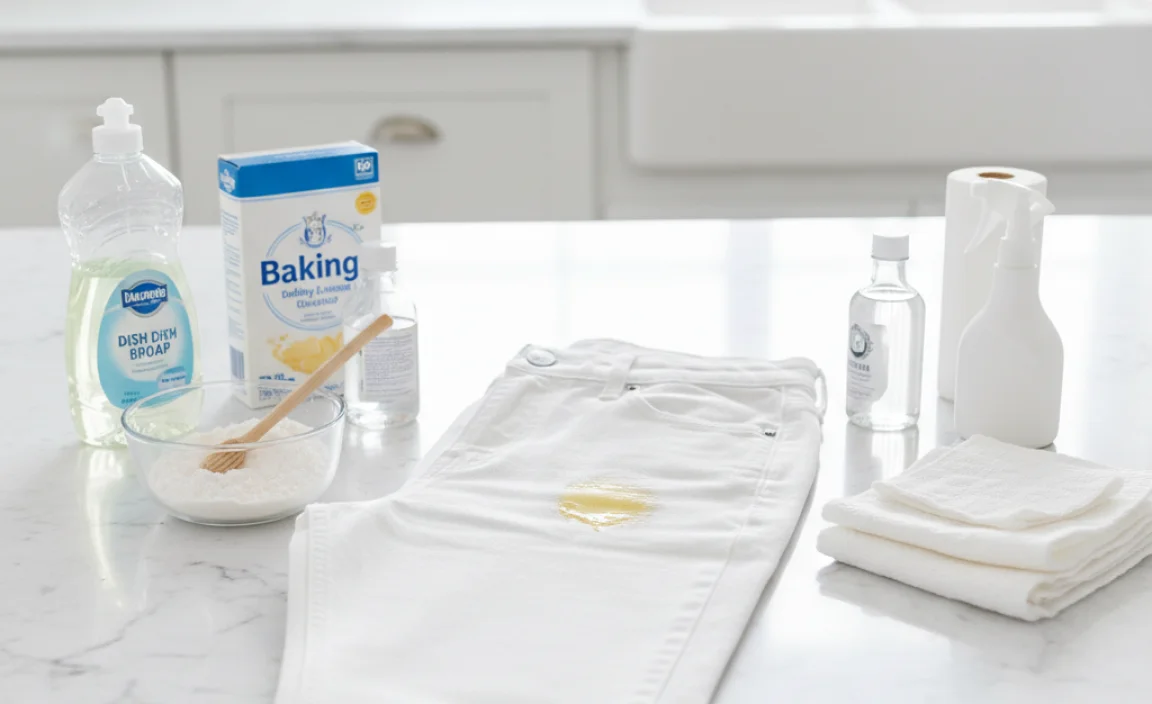
Before you begin, gather these items. Having them ready will make the stain removal process smoother and more effective:
- Butter knife or dull edge of a spoon (for scraping)
- Paper towels or clean white cloths
- Mild dish soap (like Dawn, known for its grease-cutting power)
- Rubbing alcohol (isopropyl alcohol)
- Cornstarch or baking soda (for absorbing grease)
- A soft-bristled brush (like an old toothbrush)
- Your usual laundry detergent
- A pre-treatment stain remover (optional, but recommended for tougher stains)
Step-by-Step Guide: Removing Butter Stains
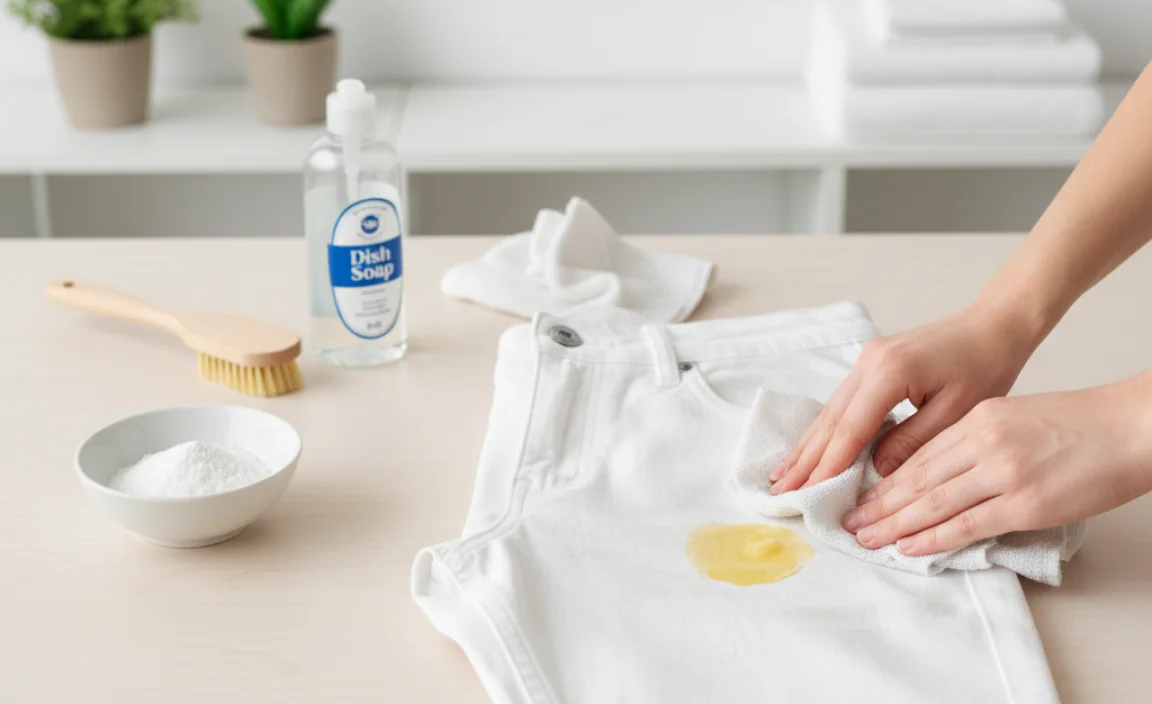
Follow these steps carefully. Acting quickly is your best ally when it comes to fresh butter stains.
Step 1: Act Fast and Scrape Away Excess Butter
As soon as you notice the butter stain, reach for a butter knife or the dull edge of a spoon. Gently scrape off as much of the excess butter as possible. Be careful not to spread the stain further into the fabric. The goal here is to remove any surface butter before it can seep deeper into the denim fibers.
Step 2: Blot, Don’t Rub
Take a clean paper towel or a white cloth and gently blot the stained area. This helps to absorb any remaining surface butter. Again, the key is to blot and absorb, not to rub. Rubbing can push the grease deeper into the fabric and potentially damage the denim fibers.
Step 3: Apply an Absorbent Powder (Optional but Recommended for Fresh Stains)
For fresh, especially greasy stains, applying an absorbent powder can make a significant difference. Generously sprinkle cornstarch or baking soda directly onto the stain. These powders are excellent at drawing out oil. Let the powder sit on the stain for at least 15-30 minutes, or even longer if possible. You’ll see the powder absorb the butter, turning clumpy and slightly yellow.
After the powder has done its work, gently brush or shake it off. You can use a soft-bristled brush for this. You might be surprised at how much of the oily residue is lifted by the powder.
Step 4: Pre-treat the Stain
Now it’s time for a more targeted approach. You have a couple of excellent options:
Option A: Dish Soap Method
Mild dish soap, especially brands known for their grease-cutting abilities, is highly effective. Apply a small amount of liquid dish soap directly to the remaining stain. Gently rub it into the fabric with your fingers or a soft-bristled brush. Let it sit for about 5-10 minutes to allow the soap to break down the butter’s oils.
Option B: Rubbing Alcohol Method
Rubbing alcohol (isopropyl alcohol) is another powerful grease solvent. Dampen a clean white cloth or cotton ball with rubbing alcohol and blot the stain. You can also apply a small amount of rubbing alcohol directly to the stain. Be sure to test this on an inconspicuous area first if you’re concerned about colorfastness, though white denim is generally quite resilient. Let it sit for a few minutes.
Option C: Commercial Stain Remover
If you have a pre-treatment stain remover designed for grease or oil stains, follow the product’s instructions. Apply it directly to the stain and let it dwell for the recommended time.
Step 5: Rinse the Treated Area
Once the pre-treatment has had time to work, rinse the treated area thoroughly with cool water. This helps to wash away the loosened butter residue and the cleaning agent you used.
Step 6: Launder Your White Jeans
Now it’s time to put your white jeans in the washing machine. Wash them as you normally would, using your preferred laundry detergent. For white items, it’s often a good idea to use the warmest water setting that is safe for the fabric, as this can help in further breaking down any residual oils. You can also add a laundry booster or use an extra rinse cycle if you want to be extra sure.
Step 7: Inspect Before Drying
This is a crucial step! Before you put your jeans in the dryer, check the stained area carefully. If any trace of the butter stain remains, do NOT put them in the dryer. The heat from the dryer will set the stain permanently, making it much harder, if not impossible, to remove. If the stain is still visible, repeat the pre-treatment and washing steps.
Step 8: Air Dry or Tumble Dry
Once you’re confident the stain is completely gone, you can air dry your white jeans or tumble dry them on a low heat setting. Air drying is always a gentler option for keeping whites bright and preventing shrinkage.
Dealing with Stubborn or Old Butter Stains
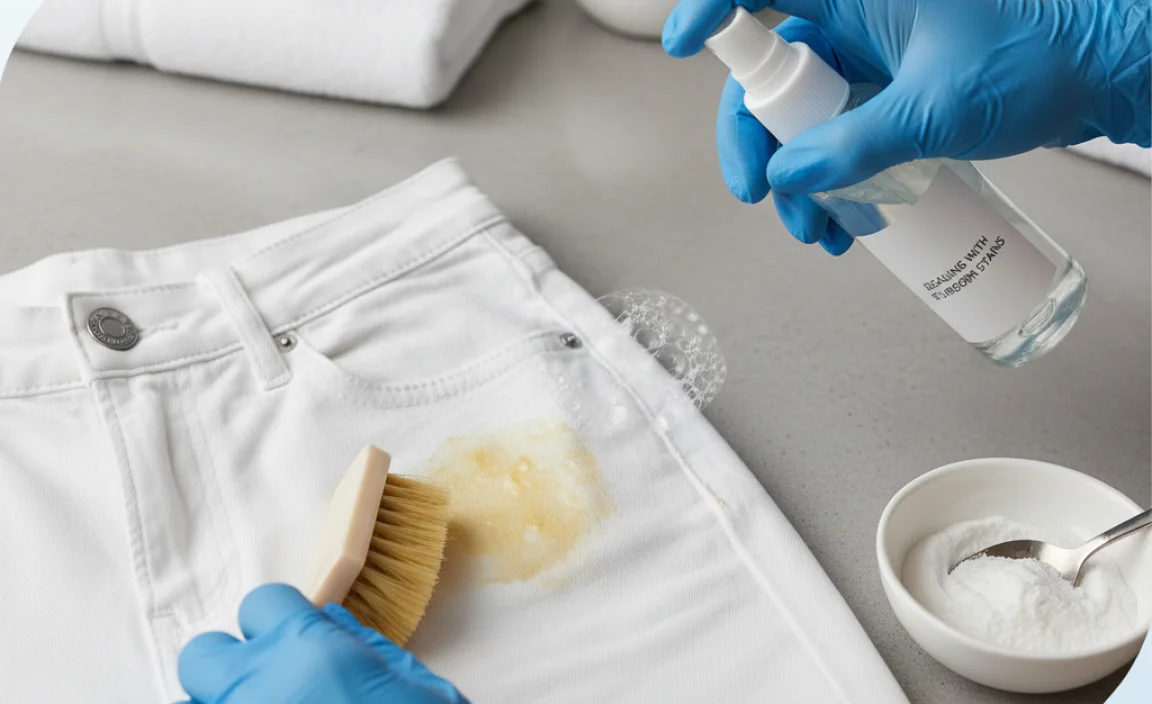
Sometimes, butter stains aren’t discovered immediately, or they’ve been through the wash and dry cycle once or twice, making them more challenging. For these tougher cases, you might need to escalate your approach:
- Repeat Pre-treatment: Don’t be afraid to repeat the dish soap, rubbing alcohol, or commercial stain remover steps, and let them dwell for a longer period (up to 30 minutes or more).
- Enzyme-Based Cleaners: Look for a laundry stain remover that contains enzymes. Enzymes are biological catalysts that break down organic matter, including grease and oil. These can be very effective on stubborn stains.
- Professional Dry Cleaning: If the stain persists after multiple home treatments, consider taking your white jeans to a professional dry cleaner. They have access to specialized solvents and techniques that can tackle difficult stains.
What to Avoid When Removing Butter Stains
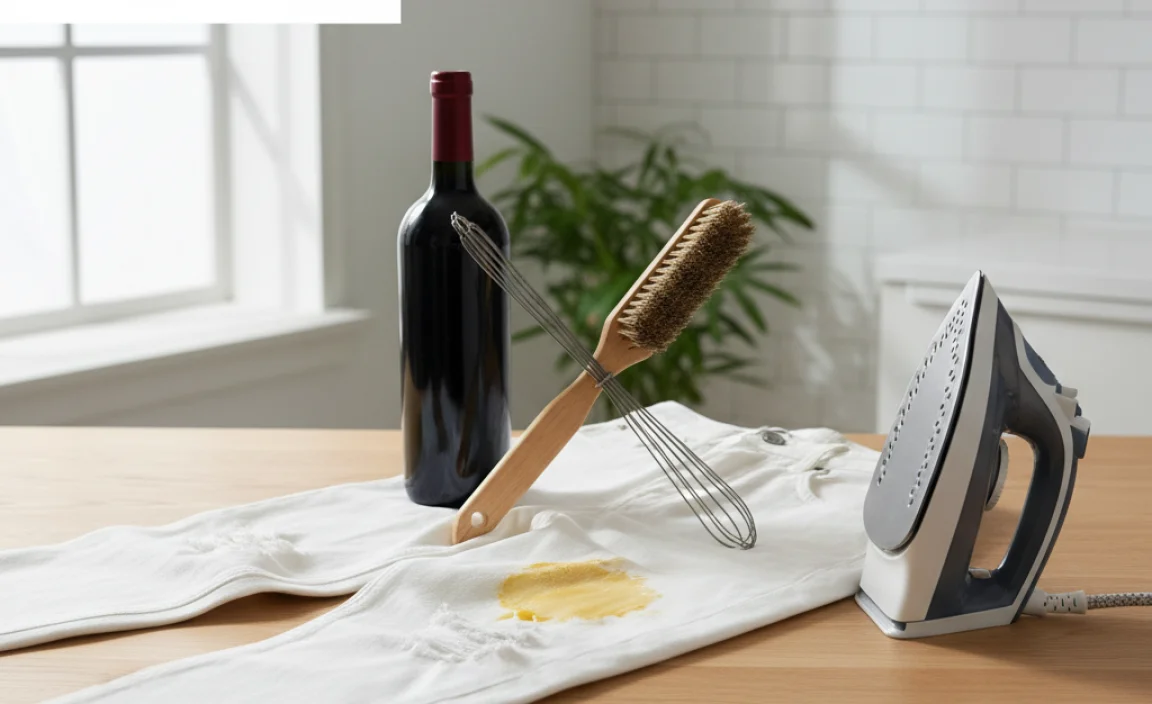
To ensure the best results and avoid making the stain worse, keep these points in mind:
- Avoid Hot Water Initially: While hot water is good for washing afterward, using very hot water directly on a fresh grease stain can sometimes cook the grease into the fibers. Stick to cool or lukewarm water for initial treatments.
- Don’t Rub Vigorously: As mentioned, aggressive rubbing can spread the stain and damage the fabric. Gentle blotting and dabbing are key.
- Don’t Use Bleach Unwisely: While bleach might seem like the go-to for white fabrics, it can sometimes react with oil stains, making them yellow or more permanent. It’s generally better to tackle the grease with a degreaser first, and use bleach only as a last resort or as part of a regular wash if you’re sure the grease is gone. Always follow bleach instructions carefully.
- Avoid the Dryer with Stains Present: This cannot be stressed enough! Heat sets stains. Always inspect your garment thoroughly before it goes into the dryer.
Quick Comparison of Pre-Treatment Methods
Here’s a quick look at the effectiveness of common pre-treatment methods for butter stains:
| Method | Effectiveness on Grease | Ease of Use | Best For |
|---|---|---|---|
| Dish Soap | High | Easy | Fresh to moderate stains |
| Rubbing Alcohol | High | Easy | Moderate to stubborn stains |
| Cornstarch/Baking Soda | Medium (Absorbent) | Easy | Fresh, very greasy stains (pre-treatment) |
| Commercial Stain Remover (Enzyme/Degreaser) | Very High | Easy | Stubborn and old stains |
Fabric Care for White Denim
Maintaining white denim goes beyond just stain removal. Proper care ensures they stay bright and last longer:
- Wash with Whites Only: Always wash your white jeans separately or with other white clothing to prevent color transfer.
- Use a Gentle Cycle (Sometimes): While a standard wash is fine for sturdy denim, consider a gentle cycle if the fabric feels delicate or if you’ve had to pre-treat it multiple times.
- Avoid Overloading the Washer: Give your jeans room to move freely in the wash for a more thorough clean.
- Sun Bleaching (Natural Brightener): For general dinginess, drying white jeans in direct sunlight can act as a natural brightener. Lay them flat or hang them to dry during a sunny day. The UV rays can help to whiten the fabric.
- Check Care Labels: Always refer to the care label on your jeans for specific washing and drying instructions. Different denim blends might have unique requirements. For example, some modern denim blends might recommend colder water to preserve elasticity. You can find general guidelines from organizations like the Federal Trade Commission on understanding garment care labels.
Frequently Asked Questions About Removing Butter Stains
What’s the quickest way to remove a fresh butter stain from white jeans?
The quickest way is to immediately scrape off excess butter, blot the stain, and then apply dish soap directly to the spot. Let it sit for a few minutes, rinse, and wash. For extra absorption, sprinkle cornstarch or baking soda on it initially.
Can I use hand sanitizer to remove a butter stain?
Yes, the alcohol content in many hand sanitizers can help break down grease. Apply a small amount to the stain, let it work for a minute, and then blot. Follow up with your regular washing routine.
Will rubbing alcohol damage my white jeans?
Generally, rubbing alcohol is safe for white denim. However, it’s always a good practice to test on an inconspicuous area first, like an inside seam, to be absolutely sure. Always dilute it slightly with water if you are concerned.
How long should I let a stain remover sit on the stain?
For most pre-treatment solutions like dish soap or rubbing alcohol, 5-10 minutes is sufficient. For stubborn stains with commercial removers, follow the product’s instructions, which may range from a few minutes to several hours.
What if the butter stain is old and set?
Old, set butter stains are tougher. You’ll likely need to repeat the pre-treatment steps multiple times. Consider using an enzyme-based stain remover, or as a last resort, consult a professional dry cleaner.
Is it safe to bleach butter stains?
While bleach can whiten, it’s not the best first step for grease stains. It can sometimes react with the oil, making the stain yellow or permanent. It’s better to target the grease with a degreaser first. If you choose to use bleach, do so after the grease has been largely removed and always follow product instructions carefully.
Conclusion
Butter stains on white jeans can certainly cause a moment of panic, but they are far from a permanent fashion disaster. By acting swiftly and employing the right techniques—whether it’s the simple power of dish soap, the absorbent nature of cornstarch, or the solvent power of rubbing alcohol—you can effectively lift grease from your favorite white denim. Remember to always scrape, blot, pre-treat, and inspect before drying. With these proven methods, your white jeans can continue to be a go-to piece in your wardrobe, looking crisp and clean, no matter what spills life throws your way.


